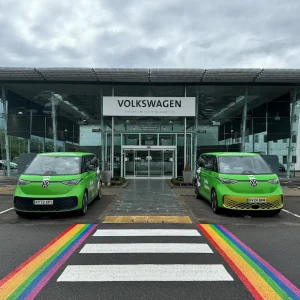Car makers are under-reporting CO2 figures by as much as 43% by using artificial techniques, according to the European pressure group Transport & Environment.
In a recent report, T&E said across all brands, the gap between real-world fuel consumption and the car makers’ official results has widened from 8% in 2001 to 43% in 2013 for company car drivers on average.
T&E accused car makers of using “dirty tactics” by purposefully switching off the in-built radios and aircon to decrease fuel consumption and CO2 emissions. It also claimed that manufacturers push brake pads further into the calipers, use higher gears than necessary and tape over doors and windows to improve airflow.
T&E concluded that Mercedes-Benz under-reported CO2 the most, followed by BMW and Ford, while Toyota was the least manipulative car maker.
In the US, Hyundai and Kia have been fined $300m (£190m) for overstating fuel economy and Ford has also reimbursed customers after publishing incorrect fuel figures.
The SMMT responded by making it clear the current European tests the car makers use are legal, and are witnessed by third parties such as the DfT’s Vehicle Certification Agency.
Responding to the claims in the report a Mercedes spokesman told BusinessCar the current testing process, known as the New European Driving Cycle, is closely monitored by the authorities. “Independent of the NEDC testing, the real-life efficiency of our vehicles remains a vital priority in our development and design process,” he said.
“That’s why we invest heavily in all measures that increase efficiency and reduce fuel consumption. These include measures that don’t necessarily have a big influence on the NEDC values, but that enable our customers to experience significantly lower fuel consumption.”
Ford refused to comment on the validly of the report, but a spokesman told BusinessCar: “While the gap between NEDC and real-world results is too big, as a manufacturer we have no choice but to certify to the given cycle.”
BusinessCar also contacted BMW but it failed to respond before we went to press.
The proposed Worldwide Harmonised Light-duty Test Procedure (see page one) aims to reflect real-world driving; however, T&E, which previously campaigned successfully for the introduction of green tyre labels, believes car makers are trying to delay its introduction from 2017 to 2022. “It’s a lame excuse to prepare for the introduction [of the new test] and exploit the loopholes in the current test,” a spokesman told BusinessCar.
Fleet software company Chevin Fleet Solutions said fleets are moving from manufacturer CO2 figures to using a fuel-use calculation when calculating carbon footprints.
“We are reaching a situation where manufacturer official CO2 figures are really being robbed of their credibility, certainly in terms of absolute accuracy,” said MD Ashley Sowerby. “Fleets that are serious about calculating their carbon footprint in a meaningful sense need to find new ways of measuring their output. This is an important area of company vehicle activity and we should all be striving for precision,” said Sowerby.





